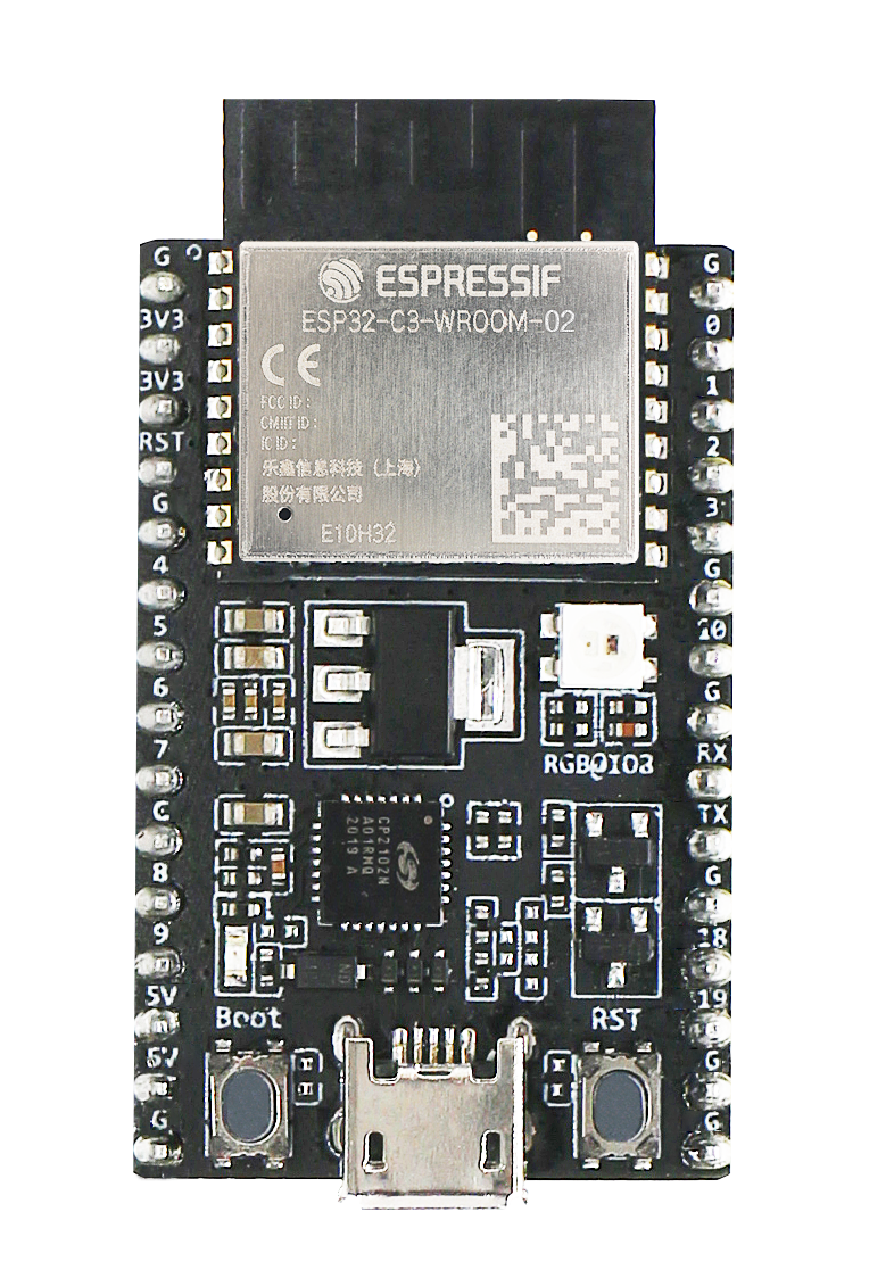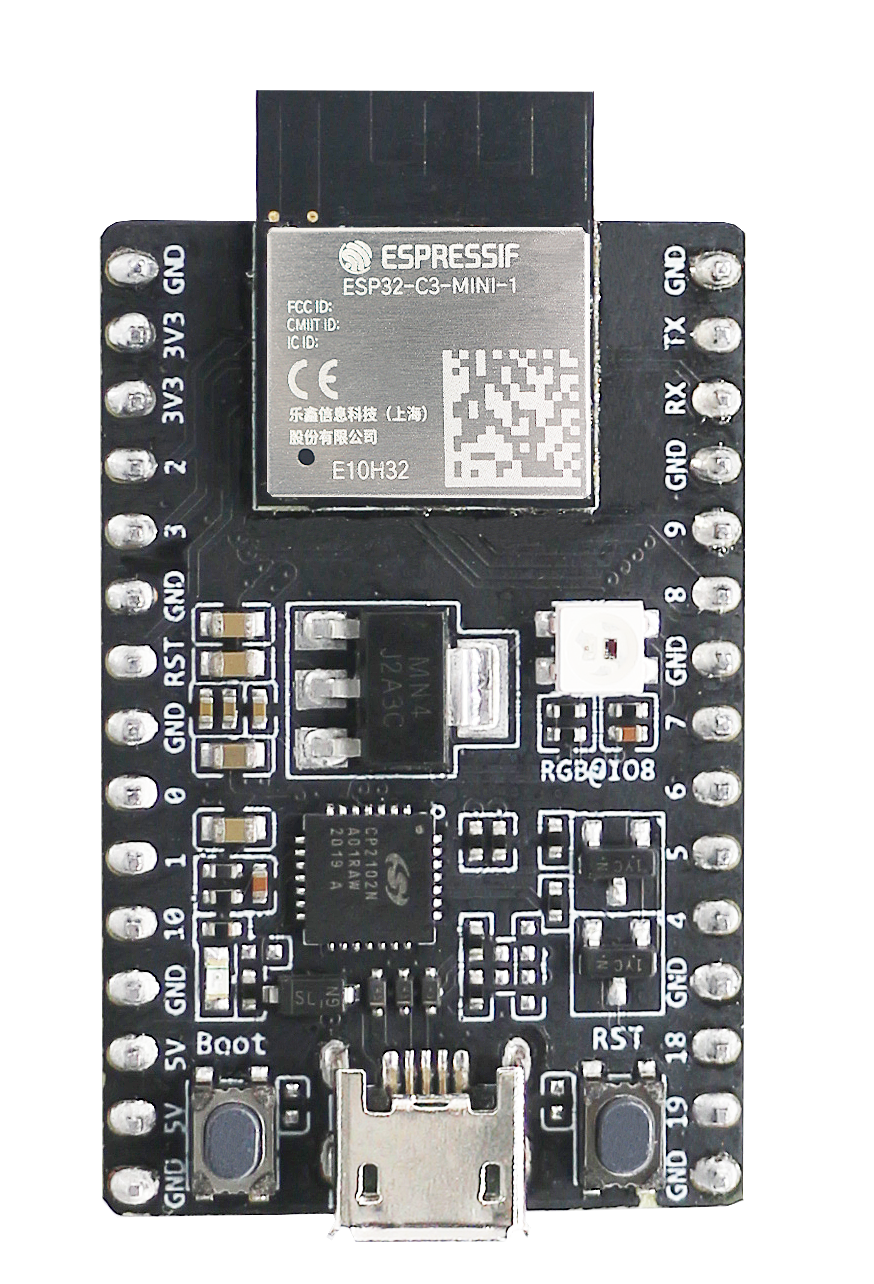ESP32-C3 DevKit
The ESP32-C3 DevKit is an entry-level development board equipped with either an ESP32-C3-WROOM-02 or an ESP32-C3-MINI-1. ESP32-C3-WROOM-02 and ESP32-C3-MINI-1 are SoMs based on the RISC-V ESP32-C3 CPU.
Most of the I/O pins are broken out to the pin headers on both sides for easy interfacing. Developers can either connect peripherals with jumper wires or mount ESP32-C3 DevKit on a breadboard.

ESP32-C3-DevKitC-02 |

ESP32-C3-DevKitM-1 |
Configurations
nsh
Basic configuration to run the NuttShell (nsh).
gpio
This is a test for the GPIO driver. It uses GPIO1 and GPIO2 as outputs and GPIO9 as an interrupt pin.
At the nsh, we can turn the outputs on and off with the following:
nsh> gpio -o 1 /dev/gpio0
nsh> gpio -o 1 /dev/gpio1
nsh> gpio -o 0 /dev/gpio0
nsh> gpio -o 0 /dev/gpio1
We can use the interrupt pin to send a signal when the interrupt fires:
nsh> gpio -w 14 /dev/gpio2
The pin is configured as a rising edge interrupt, so after issuing the above command, connect it to 3.3V.
watchdog
This configuration tests the watchdog timers. It includes the 2 MWDTS, adds driver support, registers the WDTs as devices and includes the watchdog example application.
To test it, just run the following command:
nsh> wdog -i /dev/watchdogX
Where X is the watchdog instance.
watcher
This configuration tests the watchdog timers in the capture mode. It includes the 2 MWDTS, adds driver support, registers the WDTs as devices and includes the watcher and watched example applications.
To test it, just run the following command:
nsh> watcher
nsh> watched
usbconsole
This configuration tests the built-in USB-to-serial converter found in ESP32-C3 (revision 3). esptool can be used to check the version of the chip and if this feature is supported. Running esptool.py -p <port> chip_id should have Chip is ESP32-C3 (revision 3) in its output. When connecting the board a new device should appear, a /dev/ttyACMX on Linux or a /dev/cu.usbmodemXXX om macOS. This can be used to flash and monitor the device with the usual commands:
make download ESPTOOL_PORT=/dev/ttyACM0
minicom -D /dev/ttyACM0